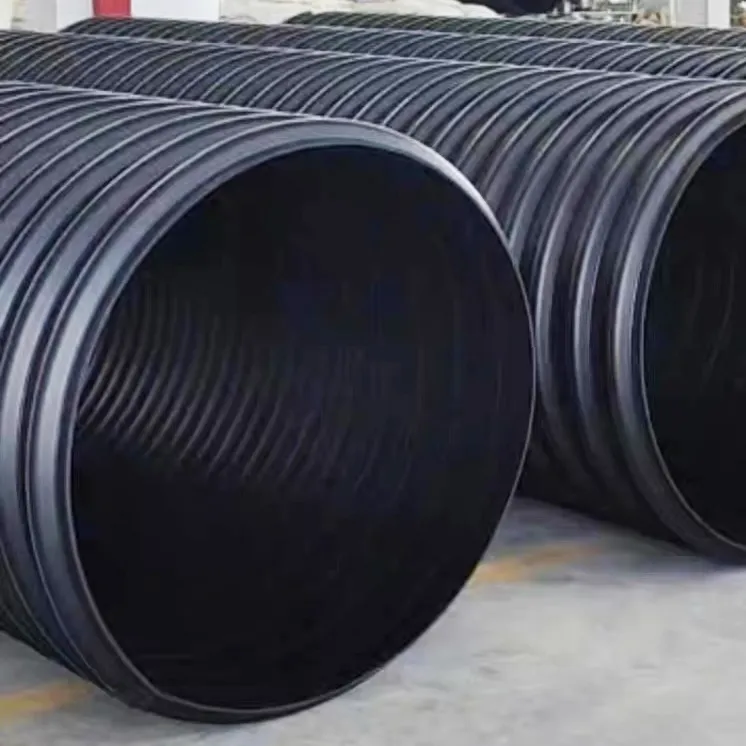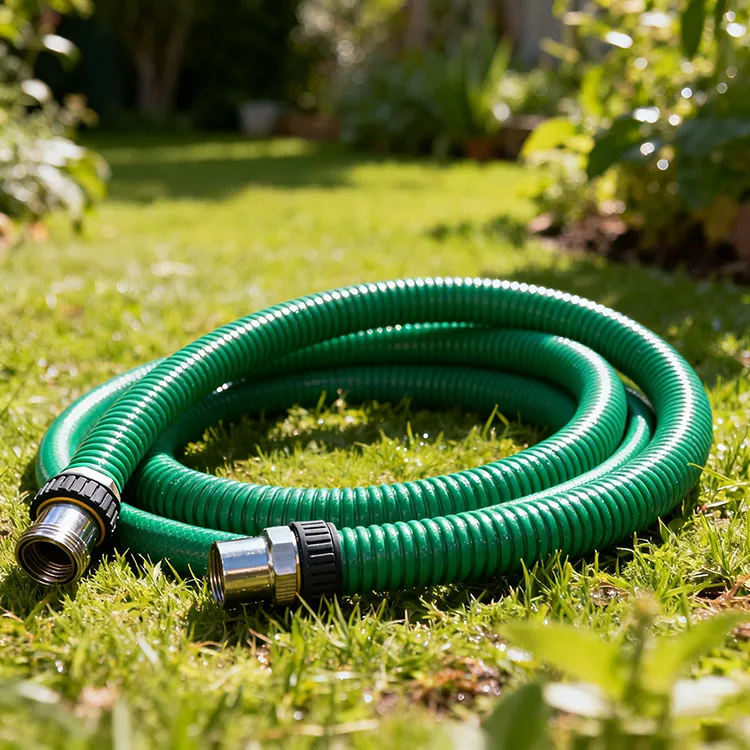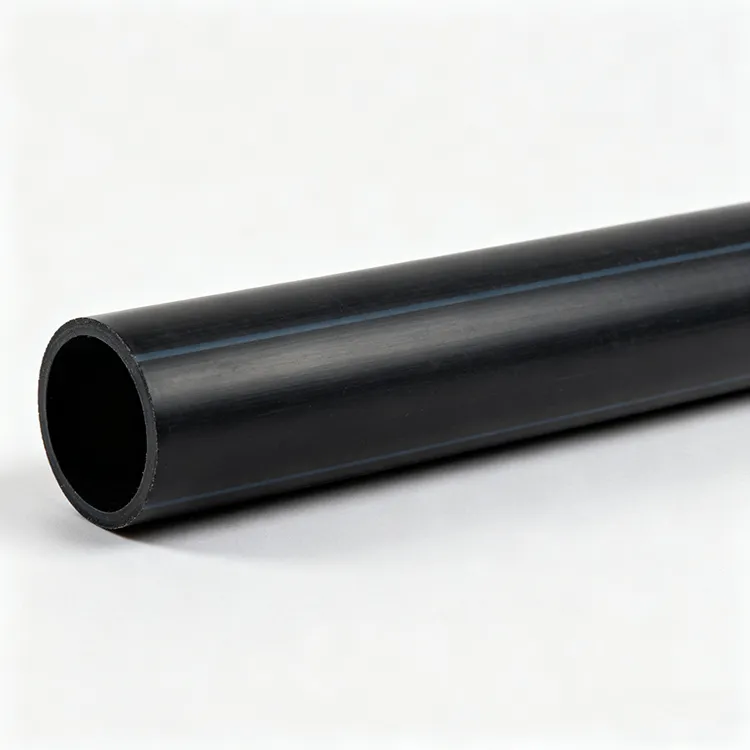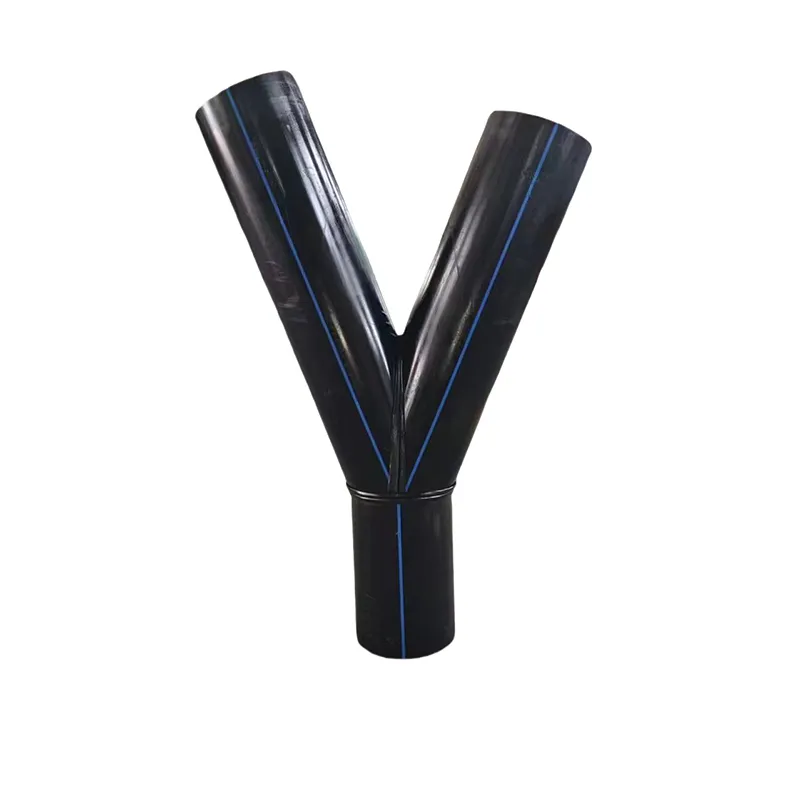HDPE drainage pipe is a kind of water pipe. Why is it called HDPE drainage pipe? What is special about it?
What is HDPE drainage pipe
HDPE drainage pipe is mainly made of high-density polyethylene resin. It is a general term for thermoplastic plastic round pipes without internal pressure made by extrusion molding process. It mainly undertakes the drainage tasks of rainwater, sewage, farmland irrigation and drainage, and is therefore widely used in drainage fields such as roads, railway roadbeds, subway projects, waste landfills, tunnels, green belts, sports fields, and slope protection caused by high water content.
Advantages of HDPE drainage pipe
1. Aging resistance and long service life. HDPE has good UV resistance, so it will not be damaged by UV radiation when stored in the open air. The buried pipe can be safely used for more than 50 years in the range of -60℃ to 60℃.
2. Good wear resistance. The wear resistance comparison experiment of HDPE and steel pipe shows that PE pipe is 4 times that of steel pipe. Compared with steel pipe, in the field of mud transportation, because PE pipe has better wear resistance, it means that PE pipe has a longer service life and better economy.
3. Good low-temperature impact resistance.
Because HDPE has a very low brittle temperature, the pipe will not crack during winter construction due to the good impact resistance of the material.
4. Significant economic benefits, because of the low cost, the investment is small. Compared with PVC pipes, HDPE pipes have low installation and maintenance costs, and their service life is longer than PVC pipes, so the comprehensive cost of HDPE is much lower than that of PVC pipes.
5. Convenient construction performance. HDPE is easy to carry, the connection process is simple, no anti-corrosion treatment is required, the construction speed is fast, and the construction has no strict requirements on the foundation.
6. Chemical stability, because the HDPE pipe material grade has good chemical resistance, the soil, electricity, acid and other factors in the general use environment will not damage the pipe. Except for a few strong oxidants at room temperature, most chemicals have no effect on it.
3. Uses of HDPE drainage pipe products
1. Longitudinal and transverse drainage and water permeability of highways.
2. Vertical and horizontal drainage of the back and side ditches of various retaining walls of highways.
3. Drainage of tunnels and underground passages.
4. Water supply and drainage for municipal projects, water treatment plants, sewage treatment plants, garbage dumps, etc.
5. Drainage for golf courses, sports fields, parks and other recreational green spaces.
6. Soil and water conservation for slope development.
7. Underground drainage for land preparation projects.
HDPE Sewer Pipe (High-Density Polyethylene Sewer Pipe) is a type of plastic piping that is commonly used in sewer and drainage systems. It is made from high-density polyethylene, a durable and flexible material that has become the standard for sewage and waste management systems around the world.
HDPE Sewer Pipe Sewer Blockage Unclogging Method
HDPE Sewer Pipe is widely used in modern drainage systems due to its excellent performance. The design of the double-wall structure not only enhances the strength of the pipe, but also has strong corrosion resistance and wear resistance, making it suitable for conveying a variety of media such as sewage and rainwater. However, over time, despite the durability of these pipes, blockages may still occur in some cases. Understanding the characteristics of the pipe will help choose the appropriate unclogging method to ensure that the sewer system is unobstructed.
1. Characteristics of HDPE Sewer Pipe
HDPE Sewer Pipe and Double Wall HDPE Pipe are usually made of high-density polyethylene (HDPE) material. They have the following characteristics:
Strong chemical corrosion resistance: Whether it is domestic sewage or industrial wastewater, HDPE pipes can effectively resist acid and alkali corrosion and are suitable for various harsh environments.
Strong structure and strong pressure resistance: Especially Double Wall HDPE Pipe, its double-wall design provides enhanced bearing capacity while the outer corrugated layer provides an internal smooth inner wall to reduce the friction of the water flow and maintain the flow capacity of the pipe.
High wear resistance and toughness: HDPE pipes have strong impact resistance and can adapt to external changes such as geological subsidence, reducing the risk of pipe rupture.
Although HDPE Sewer Pipe and Double Wall HDPE Pipe have excellent physical properties, they may still be blocked due to sediment accumulation, tree root invasion, etc.
2. Common causes of sewer blockage
1. Sediment and garbage: Such as grease, paper towels, food residues, etc. accumulate in the pipe.
2. Tree root invasion: Tree roots can enter through the joints or cracks of the pipe and hinder water flow.
3. Pipe rupture or deformation: Although HDPE Sewer Pipe has a certain pressure resistance, it may still be damaged under extreme conditions, resulting in water flow obstruction.
3. HDPE Sewer Pipe dredging method
(1) Physical dredging method
Applicable situations: Applicable to lighter blockages, such as grease, garbage, etc.
1. Manual dredging (serpentine pipe):
The dredging (serpentine pipe) can easily handle small-scale blockages in HDPE sewer pipes. The blockage can be pushed or pulled out by rotating, which is particularly suitable for kitchen waste water pipes.
2. High-pressure water gun dredging:
The high-pressure water gun can quickly remove the sediment in the Double Wall HDPE Pipe, especially the accumulation of grease and organic matter, by impacting the pipe with a strong water flow. The high-pressure water gun can not only remove the blockage, but also clean the pipe, reducing the risk of future blockages.
3. Air pressure dredging:
Use air pressure equipment (such as air pressure dredging machine) to provide a strong airflow for the HDPE sewer pipe to push out foreign matter in the pipe. This method is very effective for general blockages and is suitable for difficult-to-reach blockage locations.
(2) Chemical cleaning method
Applicable situations: blockages caused by accumulation of organic matter such as grease, sewage, etc.
1. Chemical cleaners:
There are special chemical cleaners on the market for cleaning grease and organic matter. When using these cleaning agents, make sure they are non-corrosive to HDPE Sewer Pipe and Double Wall HDPE Pipe. Usually, chemical cleaning agents need to be left in the pipe for a certain period of time to decompose the blockage before being rinsed with water.
(3) Professional mechanized unblocking
Applicable situations: Applicable to severe blockages, such as tree root invasion or pipe rupture.
1. Tree root cleaning: For blockages caused by tree root invasion, a professional tree root cutter can be used. The corrugated outer wall structure of Double Wall HDPE Pipe increases the difficulty of root invasion, but if the tree roots enter the pipe and cause blockage, professional tools must be used to clean it.
2. Pipeline endoscope inspection: Using an endoscope to accurately locate the blockage in the HDPE Sewer Pipe can help technicians find the most appropriate unblocking method.
3. Mechanical unblocking machine: For larger blockages or hard object accumulation, it is more efficient to use an electric unblocking machine. This device uses a rotating brush head or spiral head to cut or remove blockages in the pipe, which is suitable for various blockage situations, especially in the case of long pipes.
(4) Pipe repair
Applicable situations: Water flow is poor due to pipe rupture or loose joints.
1. Pipe repair or replacement:
HDPE Sewer Double Wall HDPE Pipe may rupture during use due to external force or aging. After rupture, the damaged pipe section should be repaired or replaced in time. HDPE pipes can be repaired by welding technology to ensure the sealing and strength of the pipe.
4. Inspection and prevention after unblocking
1. Pressure test: After unblocking, pressure test should be carried out to ensure that the pipe is unobstructed and leak-free to avoid re-blocking.
2. Cleaning work: After unblocking, the inside of the pipe should be thoroughly cleaned to avoid residual blockage.
3. Regular inspection: Regularly inspect HDPE Sewer Pipe and Double Wall HDPE Pipe, especially check for potential problems such as tree root invasion and pipe aging.
For blockage in HDPE Sewer Pipe sewer system, it is very important to choose the appropriate unblocking method. Physical unclogging is suitable for minor blockages, chemical cleaning can deal with grease and organic matter accumulation, and professional mechanized unclogging can solve more complex blockage problems such as tree root invasion and pipe damage. Regular inspection, cleaning and maintenance of pipes can help prevent blockages, improve drainage efficiency and extend the service life of pipes.









659.webp)
210.webp)
328.webp)

294.webp)
476.webp)


